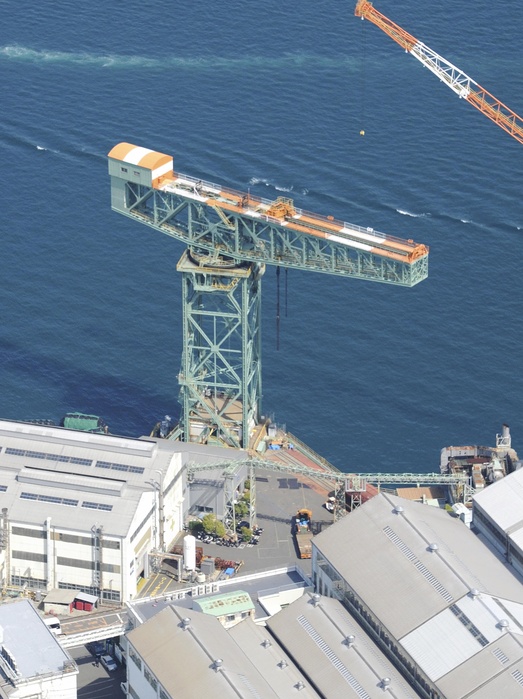
ED
Large crane at Mitsubishi Nagasaki Shipyard & Machinery Works recommended to UNESCO for registration as an Icomos site Nagasaki City / Aerial view
Giant cantilever crane (2:49 p.m., April 17, 2015, in Nagasaki City, Japan, from the head office helicopter); photo by Yuji Sakaguchi.
The International Council on Monuments and Sites (ICOMOS), an advisory body to UNESCO, has recommended the registration of the "Meiji Japan Industrial Revolution Heritage: Kyushu-Yamaguchi and Related Areas" (eight prefectures including Fukuoka Prefecture), which the government is seeking to have registered as a UNESCO World Cultural Heritage site.
The "Industrial Revolution Heritage" traces the history of Japan's heavy industry, and includes 23 properties (elements) in eight areas, from the reverberatory furnaces, shipyard and dock sites built by the Satsuma, Choshu and Saga clans at the end of the Edo period to the government-run Yawata Steel Works, Miike coal mine and Mitsubishi Nagasaki Shipyard in the late Meiji period. The site also includes operating facilities not previously included in Japan's World Heritage list, such as the shipyard's large cranes, and the Hashima coal mine, famous as "Gunkanjima" (Battleship Island).
Details
ID
30004528
Collection
License type
Editorial
Photographer
Restrictions
Authorization requested before purchase
Authorization requested before purchase
Authorization requested before purchase
Creation date
29-06-2015
Contact Aflo for all commercial uses.

More
Top Categories
